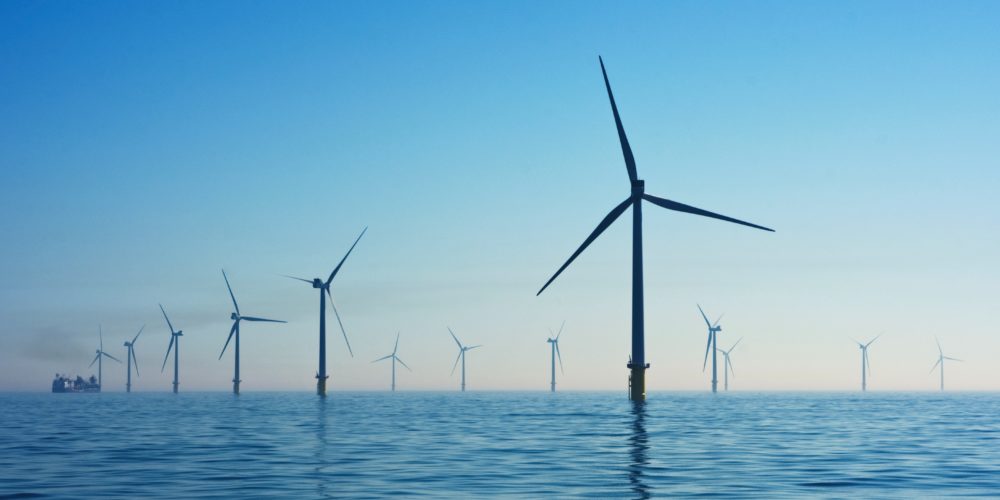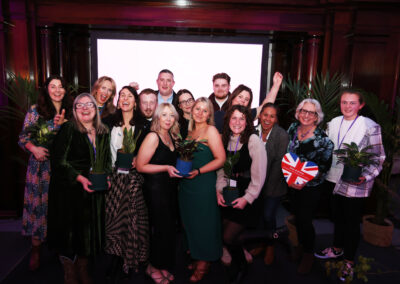One of the simplest ways for you to reduce your impact on the climate is to switch your energy supply to renewable electricity. There is now a plethora of options available on the market for ‘renewable’ or ‘green’ tariffs, but what exactly do those terms mean? The answer is a little more complex than many energy suppliers would like to admit.
Before we get into the detail of how renewable tariffs work, note that switching to renewable electricity shouldn’t necessarily be at the top of your carbon reduction to-do list.
The cleanest form of power isn’t wind or solar power; it’s the power you don’t use in the first place. Prioritising energy efficiency measures that minimise your base demand will result in lower bills and resilience to rising energy prices, while making sure the electricity you’re supplied with isn’t going to waste.

Renewable electricity – what you need to know
The UK’s electricity grid is supplied with power from a range of sources. Until relatively recently, most of our electricity was generated by coal and gas, but today coal has almost disappeared entirely. Filling this gap is a growing share of renewables – chiefly wind power, followed by solar and a small amount of hydroelectricity. These are called ‘renewable’ because the power comes from natural sources that are unlimited in supply. Renewables are the cleanest way to produce electricity.
The good, the bad and the ugly of ‘green’ tariffs
In reality, nothing changes to your actual electricity supply when you switch to a ‘renewable’ tariff. Everyone on the grid receives the same electricity mix, regardless of the tariff they are on. Suppliers are able to offer these tariffs by making sure they purchase enough power from renewable sources to match the electricity their customers use. Unfortunately, some suppliers do this more honestly than others.
The good
In the UK, a renewable electricity generator (such as a wind farm operator), is eligible to receive a special certificate called a Renewable Energy Guarantee of Origin (or REGO) for every megawatt hour of power it produces. This certificate is proof that the power generated comes from a renewable source. When a supplier purchases this power directly, they also obtain the certificate. At the end of the year, the supplier then ‘retires’ these certificates to Ofgem as proof that they have bought enough renewable electricity to cover their customers’ needs.
The not so good
However, because of the way the market works, the electricity and the REGO certificate that comes with it can in fact be sold separately. And as there is far more renewable power being generated than customers on renewable tariffs, and some buyers of renewable power have no need for the certificates, there is a big surplus of certificates in the market. This means that suppliers can buy up certificates very cheaply (at a cost of about 50p each in 2020) to cover their obligations, without needing to purchase any renewable power at all.
In other words, they can have all the right paperwork to say their tariff is ‘100 per cent renewable’, all the while buying electricity from the wholesale market that includes fossil fuels, nuclear and other power sources.
In theory, this type of tariff could still provide a valuable source of revenue for renewable electricity generators, but the extremely low cost of certificates on the market is preventing this from happening.
The ugly
Suppliers can also cover their renewable tariff obligations by purchasing the equivalent of REGO certificates from elsewhere in Europe. Because of the way the market works, there is a serious risk these can be double counted, and even if not, they mean less support for renewables here in the UK.
There is a strong argument that ‘green’ tariffs backed by certificates alone, whether from the UK or elsewhere, is greenwashing – customers are potentially being misled into believing they are directly supporting renewable electricity, when in fact their supplier is doing nothing of the sort.
What to ask your energy supplier to help you to switch
The most transparent way for a supplier to guarantee the provenance of their electricity is to purchase renewable power directly from generators through a contract known as a Power Purchase Agreement (PPA). PPAs gives the generator the long-term certainty they need to invest in their wind turbines or solar panels, while giving the end customer (you) certainty of where the electricity came from.
To understand how ‘green’ a tariff really is, ask the supplier to provide:
- An annual breakdown of the electricity mix they purchase (some suppliers provide this on their website)
- Disclosure of how much of the power they supply is backed by PPAs (and the associated certificates), and how much by just certificates alone.
The more detail the supplier provides, the better. Ultimately, if a tariff looks too good to be true, it probably is.
Other ways to source renewable electricity
There are of course other ways to obtain a genuine renewable electricity supply. For example, there is nothing stopping businesses from arranging their own PPA with a power generator, just like energy suppliers do. One way to do this is to allow a renewable energy company to install solar PV on your rooftop, under a contract to sell the electricity back to you. It may even be possible to arrange a PPA with a local renewable energy project.
Alternatively, you could install solar PV yourself, in which case you own the asset itself and have full control over the power you generate, as well as benefit from selling any excess electricity back into the grid.


